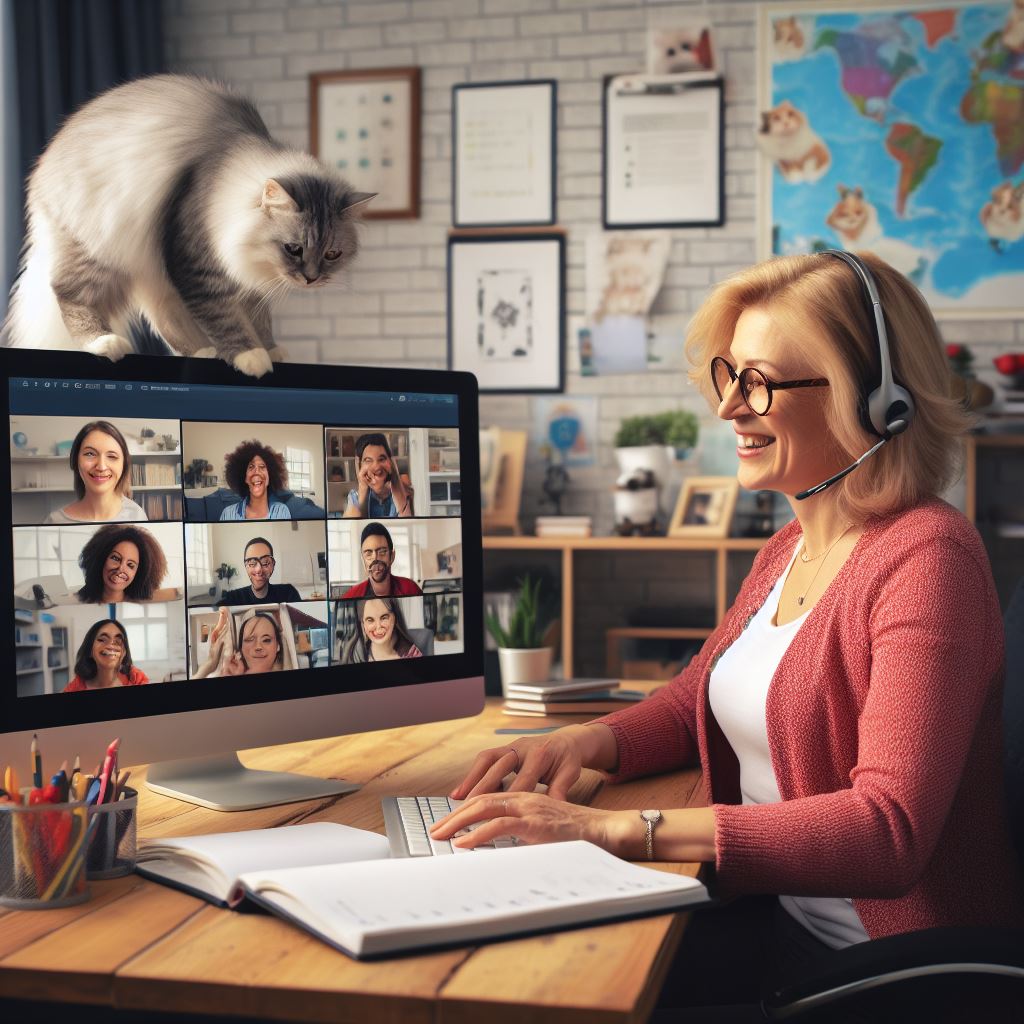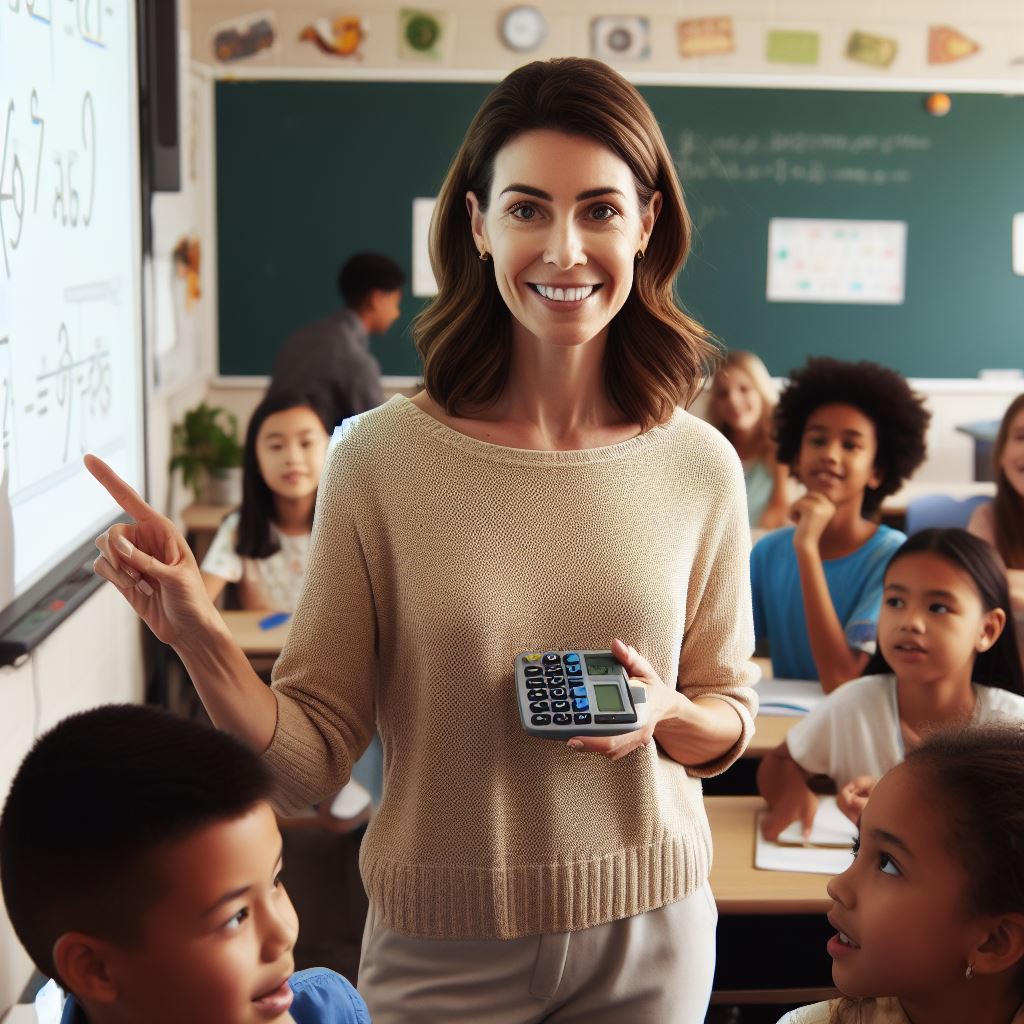Introduction
A. Importance of education and its role in society
The importance of education in society cannot be underestimated.
It plays a vital role in shaping individuals and communities, providing opportunities for growth and development.
B. Impact of the pandemic on the education system
However, the COVID-19 pandemic drastically impacted education, compelling educators to adapt to continuous learning.
C. Purpose of the blog post
The purpose of this blog post is to explore the various adaptations made by US educators during the pandemic.
As schools shifted to remote learning and faced numerous challenges, educators had to find innovative ways to engage students, deliver effective instruction, and provide support.
One of the key adaptations made by educators was transitioning from traditional classroom settings to virtual platforms.
This required mastering new technology and online tools to facilitate interactive and dynamic learning experiences.
Additionally, educators had to rethink their teaching strategies to accommodate the limitations of remote learning.
They developed creative methods to keep students motivated and involved, such as using multimedia resources, virtual experiments, and gamified activities.
Another crucial aspect was addressing the social and emotional needs of students during this challenging time.
Educators implemented virtual counseling sessions and created supportive virtual environments to foster a sense of belonging and connection among students.
Moreover, collaboration between educators became essential in sharing best practices and resources.
Online professional development opportunities enabled educators to learn from one another and adapt to the rapidly changing educational landscape.
In fact, the pandemic has presented unprecedented challenges for educators, but they have demonstrated remarkable resilience and adaptability.
US educators sustained the learning journey amid pandemic disruption by embracing technology, refining strategies, and prioritizing student well-being.
Changes in Teaching Methods During the Pandemic
Teaching methods have undergone significant changes due to the ongoing pandemic, forcing educators to adapt and find new ways to engage their students.
Transitioning from traditional to remote teaching brought challenges, yet technology played a vital role in facilitating online classes.
In this blog section, we will explore the various changes in teaching methods and the strategies implemented to ensure effective student engagement.
A. Transition from Traditional Classroom Teaching to Remote Learning
- Educators quickly had to shift from physical classrooms to conducting virtual classes.
- The sudden change required instructors to adjust their teaching styles and lesson plans.
- Online platforms such as Zoom and Google Classroom became essential tools for remote teaching.
- Teachers had to learn new skills to effectively use these platforms for instruction.
B. Use of Technology to Facilitate Online Classes
- Technology has played a vital role in ensuring continuity of education during the pandemic.
- Educators used various digital tools to deliver lectures, assignments, and assessments.
- Video conferencing allowed teachers to interact with students in real time, simulating face-to-face interactions.
- Online platforms also provided students with access to additional resources and materials for self-study.
C. Challenges Faced by Educators in Adapting to Virtual Teaching Methods
- Unfamiliarity with online teaching tools posed a significant challenge for many educators.
- Teachers had to overcome technical glitches and connectivity issues during virtual classes.
- The lack of physical presence made it harder for educators to gauge student understanding and provide immediate feedback.
- Sustaining student engagement and motivation in an online environment proved challenging.
D. Strategies Implemented to Ensure Effective Student Engagement
- Educators devised innovative strategies to keep students actively engaged during remote learning.
- Encouraging interactive discussions and group activities helped maintain student participation.
- Assigning projects and presentations allowed students to showcase their learning in a creative manner.
- Providing timely feedback and personalized support helped ensure students stayed on track.
In short, the pandemic has forced educators to adapt their teaching methods and embrace remote learning.
The transition to online classes has come with its own set of challenges, but technology has been instrumental in facilitating virtual instruction.
Transform Your Career Today
Unlock a personalized career strategy that drives real results. Get tailored advice and a roadmap designed just for you.
Start NowBy employing various strategies to enhance student engagement, educators have successfully navigated this new education landscape.
Although the future remains uncertain, these changes in teaching methods will likely have a lasting impact on education even after the pandemic subsides.
Read: Classroom Management Techniques: US Best Practices
Supporting Students’ Mental Health
During the pandemic, educators have realized the need to prioritize students’ emotional well-being.
A. Increased focus on students’ emotional well-being during the pandemic
With the challenges posed by remote learning, educators have recognized the importance of supporting students’ mental health.
Students may be experiencing heightened anxiety, stress, and feelings of isolation, making it crucial for educators to address these issues.
B. Challenges faced by educators in addressing mental health issues remotely
One of the biggest obstacles faced by educators is the inability to physically connect with students.
Reading non-verbal cues and offering immediate support becomes challenging in a virtual learning environment.
Additionally, educators must accommodate students in different time zones and adjust to various home environments that may not be conducive to learning.
C. Implementation of virtual counseling and support services
- Virtual counseling sessions have become an essential tool for supporting students’ mental health.
- Educators work in collaboration with mental health professionals to provide remote counseling services.
- Through virtual sessions, students can express their concerns and receive guidance on coping strategies.
However, ensuring student privacy and confidentiality can be challenging in a virtual setting, requiring careful planning and technology safeguards.
D. Collaboration with parents to ensure students’ mental well-being
- Educators understand the importance of working together with parents to support students’ mental health.
- Regular communication is crucial, allowing educators to gain insights into students’ well-being and address any concerns promptly.
- By involving parents in the process, educators can create a support system both within and outside the virtual classroom.
In essence, supporting students’ mental health during the pandemic has become a top priority for educators.
While facing challenges in remote learning, educators have implemented virtual counseling services and collaborated with parents to ensure students’ well-being.
By prioritizing students’ emotional needs, educators are helping students navigate these uncertain times and fostering a supportive learning environment.
Read: The Importance of Emotional Intelligence in US Teaching

Providing Equitable Education
A. Disparities in access to technology and internet connectivity
- Lack of resources hindered remote learning for many students.
- Some students did not have access to devices or reliable internet connection.
- Rural areas and low-income communities were disproportionately affected.
- Students with disabilities faced additional challenges in accessing online education.
Providing equitable education during a pandemic has been a critical challenge for US educators.
The disparities in access to technology and internet connectivity created significant barriers for students.
Many lacked the necessary resources to engage in remote learning, hindering their educational progress.
B. Efforts made by educators to bridge the digital divide
- Teachers and schools worked tirelessly to find solutions.
- Collaboration with local organizations helped secure resources.
- Fundraising initiatives supported the purchase of devices and internet access.
- Teachers provided printed materials and alternative assignments for students without devices.
Educators recognized the urgency to bridge the digital divide and took various measures to ensure all students had equal opportunities to learn.
Efforts were made to secure devices and internet access for students in need.
Showcase Your Business Today
Reach thousands of readers actively exploring professional services. Publish your business profile and grow your audience now.
Publish NowCollaboration with local organizations and fundraising initiatives played a crucial role in obtaining necessary resources.
C. Distribution of devices and internet hotspots to students in need
- School districts organized distribution events to provide devices.
- Partnerships with telecommunications companies facilitated the provision of internet hotspots.
- Strict hygiene protocols were implemented during device distribution to ensure safety.
- Students and parents were educated on device usage and internet safety.
Device distribution events were organized, adhering to strict hygiene protocols, to provide students with the necessary tools for remote learning.
Partnerships with telecommunications companies helped facilitate the provision of internet hotspots, extending connectivity to students in areas with limited access.
Students and parents were also educated on device usage and internet safety.
D. Innovative approaches to reach students lacking resources
- Teachers utilized phone calls and text messages to communicate with students.
- Recorded lessons and video tutorials were shared through online platforms.
- Teachers collaborated to create offline resources, such as activity packets and worksheets.
- Community centers and libraries provided designated spaces for students to access the internet.
However, even with these initiatives, some students still lacked the required resources. Educators had to think innovatively to reach these students.
Phone calls and text messages became essential forms of communication, ensuring students stayed connected and engaged.
Recorded lessons and video tutorials were shared through online platforms to provide instruction.
Collaboration among teachers resulted in the creation of offline resources, such as activity packets and worksheets, for students without devices.
Community centers and libraries also played a crucial role in supporting students lacking resources, providing designated spaces with internet access.
This allowed students to utilize these facilities for online learning and complete their assignments.
Basically, educators in the US have made commendable efforts to provide equitable education during the pandemic.
Despite the disparities in access to technology and internet connectivity, they have worked tirelessly to bridge the digital divide.
Educators have worked to ensure every student’s opportunity to learn and succeed through distribution events and innovative approaches.
Read: American Special Education: A Deep Dive for Teachers
Addressing Special Education Needs
A. Unique challenges faced by educators in teaching students with special needs remotely
Teaching students with special needs remotely presents unique challenges for educators.
Adapting to accommodate individual education plans (IEPs) has been crucial in ensuring inclusion.
B. Utilization of assistive technology and individualized support systems
The utilization of assistive technology has played a significant role in meeting students’ needs.
Individualized support systems have been implemented to provide tailored assistance for special education students.
C. Collaboration with parents, therapists, and support staff to meet students’ needs
Collaboration with parents, therapists, and support staff is essential in creating a comprehensive support network.
- Virtual meetings are pivotal for adjusting individualized education plans, while digital platforms ease resource sharing.
- Creative delivery methods for remote specialized instruction include visual aids and regular check-ins. Flexible scheduling accommodates diverse needs.
- Regular communication channels and timely feedback are established for parents. Teachers ensure engagement in virtual lessons.
- Virtual classrooms simulate real-life settings, employing interactive activities for diverse learning styles.
- Collaboration with therapists ensures uninterrupted essential therapies. Integration of online resources optimizes remote learning.
- Continuous professional development equips educators with strategies for special needs. Recorded lessons aid review and support.
- Emotional support is prioritized for special education students in remote learning. Curriculum adaptations maintain necessary accommodations.
- Regular assessments and progress monitoring ensure students’ individual goals are met in remote education.
Essentially, addressing the special education needs of students during remote learning has required significant adaptations and collaboration.
Explore Further: Differences Between School Counselors and Psychologists
Uncover the Details: US Public vs. University Libraries: What’s the Difference?
Professional Development and Collaboration
A. Importance of Ongoing Professional Development During the Pandemic
The pandemic has highlighted the crucial role of ongoing professional development for educators.
Continuous learning and skill enhancement help teachers adapt to new teaching methods and technologies.
Through professional development, educators can stay updated on the latest research and instructional strategies.
It allows them to address the unique challenges of distance learning and ensure quality education for students.
B. Webinars, Virtual Conferences, and Online Workshops Organized for Educators
Webinars, virtual conferences, and online workshops have become essential for educators during the pandemic.
These platforms provide them with opportunities to learn from experts without leaving their homes.
Through interactive sessions, teachers can gain insights into effective instructional techniques for remote teaching.
They can also exchange ideas and experiences with colleagues from different educational institutions.
C. Learning Communities and Collaborative Platforms for Sharing Best Practices
The pandemic has led to the formation of learning communities and collaborative platforms for educators.
These communities offer a space for sharing best practices, resources, and support.
Teachers can collaborate on lesson plans, assessment strategies, and classroom management techniques.
They can engage in discussions, give feedback, and seek advice on challenges they face in their teaching.
D. Recognition of the Strength and Resilience of the Educational Community
- The pandemic has highlighted the strength and resilience of the educational community.
- Educators have shown incredible adaptability in transitioning to remote and hybrid teaching formats.
- They have embraced new technologies, redesigned lesson plans, and implemented innovative teaching methods.
- The tireless efforts of teachers to ensure continuous learning for students deserve recognition and appreciation.
Generally, ongoing professional development is crucial for educators during the pandemic.
Webinars, virtual conferences, and online workshops provide valuable learning opportunities.
Collaborative platforms and learning communities foster the sharing of best practices.
The strength and resilience of the educational community should be recognized and celebrated.
Through these efforts, educators are adapting and ensuring quality education for their students.
Read: Teacher Work-Life Balance in the USA: Tips and Truths
Showcase Your Business Today
Reach thousands of readers actively exploring professional services. Publish your business profile and grow your audience now.
Publish NowFind Out More: The Administrator’s Role in School Safety Protocols
Conclusion
US educators have made numerous adaptations during the pandemic to ensure continuity of education.
They have embraced remote learning platforms, utilized technology for interactive teaching, and implemented innovative assessment methods.
Despite the challenges, their dedication and commitment to providing quality education have been commendable.
It is important to acknowledge the efforts of these educators who have gone above and beyond to support their students during these unprecedented times.
Their creativity, resilience, and adaptability have been instrumental in minimizing the impact of the pandemic on education.
Looking ahead, there is hope for a post-pandemic world where valuable lessons learned in education can be applied.
The experience of teaching during a crisis has shed light on the importance of flexibility, adaptability, and the role of technology in enhancing learning.
Educators can now integrate these lessons and continue to improve the education system.
As we move forward, it is crucial to continue supporting and investing in our educators.
Their tireless efforts have proven that quality education can persevere even amidst the most challenging circumstances.
By recognizing their dedication, we can ensure a brighter future for both educators and students alike.
The pandemic may have disrupted the traditional ways of teaching, but it has also sparked innovation and opened doors to new possibilities.
Let us embrace these adaptations and stride towards a post-pandemic world that values resilience, inclusivity, and a commitment to excellence in education.
[E-Books for Sale]
The Big Book of 500 High-Paying Jobs in America: Unlock Your Earning Potential
$19.99 • 500 High-Paying Jobs • 330 pages
Explore 500 high-paying jobs in America and learn how to boost your career, earn more, and achieve success!
See All 500 High-Paying Jobs of this E-Book
1001 Professions Without a Degree: High-Paying American Jobs You Can Start Now
$19.99 • 1001 Professions Without a Degree • 174 pages
Discover 1001 high-paying jobs without a degree! Unlock career tips, skills, and success strategies for just $19.99!




